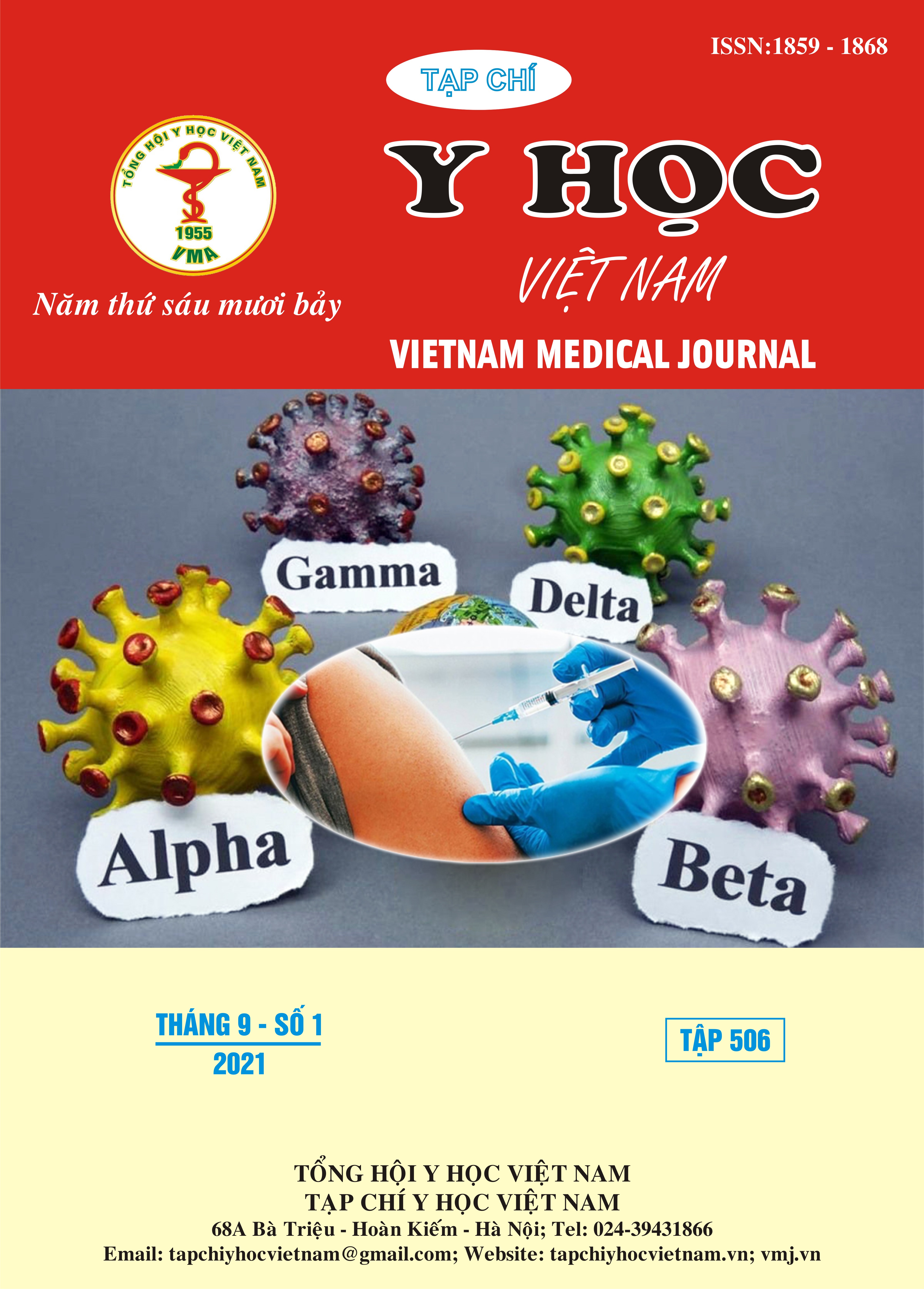CLINICAL, PARACLINICAL FEATURES OF PATIENTS WITH INVASIVE PULMONARY FUNGAL INFECTION
Main Article Content
Abstract
Objective: To describe the clinical and paraclinical characteristics of patients with invasive pulmonary fungal infection. Population and Method: Retrospective, Prospective descriptive study on 41 patients with invasive pulmonary fungal infection treated at the Respiratory Center of BachMai Hospital in VietNam from January 2019 to 06/2021 Results: Approximately 2/3 patients with invasive fungal infection were male, the group of patients over 60 years was 53,7%. COPD and Asthma (31,7%), type 2 diabetes (24,4%) were the most frequent cormobidities. The very multifaceted reason for entry: productive cough (63,4%), dyspnea (51,2%), fatigue (36,6%), fever (31,7%). On the test ofmicrobiologie the most common fungal species is Aspergilus fumigatus (65,9%). Conclusion: This study presented the clinical and paraclinical signs of invasive fungal infection are multiform, non-specific, this is why you have to think about fungal infection in patients with atopic factor have respiratory symptoms that do not improve with conventional therapies .
Article Details
Keywords
Invasive pulmonary fungal infection, clinical, paraclinical
References
2. Denning D.W. (2015). The ambitious “95-95 by 2025” roadmap for the diagnosis and management of fungal diseases. Thorax, 70(7), 613–614.
3. Khuyến cáo chẩn đoán và điều trị nhiễm nấm xâm lấn, hội hô hấp Việt Nam và Hội Hồi sức cấp cứu và chống độc Việt Nam.
4.Trần Duy Hiến (2014). Đặc điểm lâm sàng, cận lâm sàng và kết quả điều trị nấm phổi. Luận văn bác sĩ Y khoa, Đại học Y Hà Nội
5. Philippe B., Ibrahim-Granet O., Prévost M.C. và cộng sự. (2003). Killing of Aspergillus fumigatus by alveolar macrophages is mediated by reactive oxidant intermediates. Infect Immun, 71(6), 3034–3042.
6. Roilides E., Uhlig K., Venzon D. và cộng sự. (1993). Enhancement of oxidative response and damage caused by human neutrophils to Aspergillus fumigatus hyphae by granulocyte colony-stimulating factor and gamma interferon. Infect Immun, 61(4), 1185–1193.
7. Nguyễn Thị Như Quỳnh, Chu Thị Hạnh (2018). Đặc điểm lâm sàng, cận lâm sàng và kết quả điều trị nấm phổi xâm lấn.Luận văn bác sĩ nội trú, Đại học Y Hà Nội.
8. Phạm Khắc Trung, Bùi Văn Lệnh (2010). Nghiên cứu đặc điểm Xquang thường quy và cắt lớp vi tính bệnh nhân nấm phổi. Luận văn tốt nghiệp thạc sĩ, Đại học Y Hà Nội.
9. Bùi Xuân Đồng (1984). Nhóm nấm Hypomycettes ở Việt Nam. Nhà xuất bản khoa học kĩ thuật.


